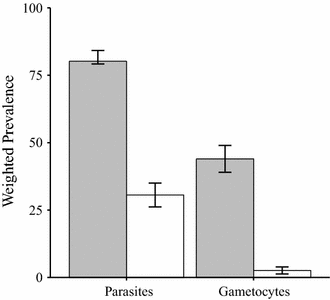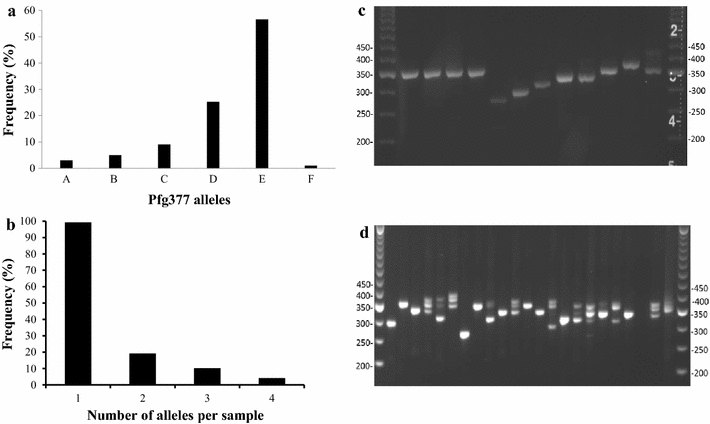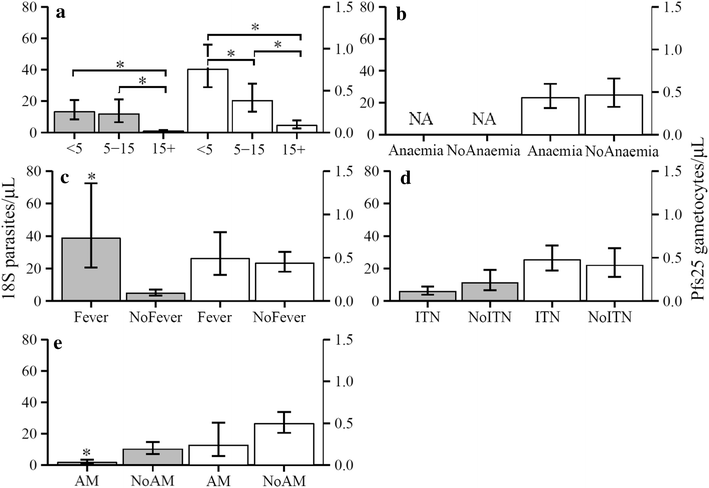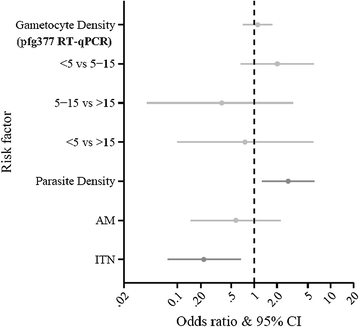Assessment of submicroscopic infections and gametocyte carriage of Plasmodium falciparum during peak malaria transmission season in a community-based cross-sectional survey in western Kenya, 2012
- PMID: 27543112
- PMCID: PMC4992329
- DOI: 10.1186/s12936-016-1482-4
Assessment of submicroscopic infections and gametocyte carriage of Plasmodium falciparum during peak malaria transmission season in a community-based cross-sectional survey in western Kenya, 2012
Abstract
Background: Although malaria control intervention has greatly decreased malaria morbidity and mortality in many African countries, further decline in parasite prevalence has stagnated in western Kenya. In order to assess if malaria transmission reservoir is associated with this stagnation, submicroscopic infection and gametocyte carriage was estimated. Risk factors and associations between malaria control interventions and gametocyte carriage were further investigated in this study.
Methods: A total of 996 dried blood spot samples were used from two strata, all smear-positives (516 samples) and randomly selected smear-negatives (480 samples), from a community cross-sectional survey conducted at peak transmission season in 2012 in Siaya County, western Kenya. Plasmodium falciparum parasite presence and density were determined by stained blood smear and by 18S mRNA transcripts using nucleic acid sequence-based amplification assay (NASBA), gametocyte presence and density were determined by blood smear and by Pfs25 mRNA-NASBA, and gametocyte diversity by Pfg377 mRNA RT-PCR and RT-qPCR.
Results: Of the randomly selected smear-negative samples, 69.6 % (334/480) were positive by 18S-NASBA while 18S-NASBA detected 99.6 % (514/516) smear positive samples. Overall, 80.2 % of the weighted population was parasite positive by 18S-NASBA vs 30.6 % by smear diagnosis and 44.0 % of the weighted population was gametocyte positive by Pfs25-NASBA vs 2.6 % by smear diagnosis. Children 5-15 years old were more likely to be parasitaemic and gametocytaemic by NASBA than individuals >15 years old or children <5 years old while gametocyte density decreased with age. Anaemia and self-reported fever within the past 24 h were associated with increased odds of gametocytaemia. Fever was also positively associated with parasite density, but not with gametocyte density. Anti-malarial use within the past 2 weeks decreased the odds of gametocytaemia, but not the odds of parasitaemia. In contrast, recent anti-malarial use was associated with lowered parasite density, but not the gametocyte density. Use of ITNs was associated with lower odds for parasitaemia in part of the study area with a longer history of ITN interventions. In the same part of study area, the odds of having multiple gametocyte alleles were also lower in individuals using ITNs than in those not using ITNs and parasite density was positively associated with gametocyte diversity.
Conclusion: A large proportion of submicroscopic parasites and gametocytes in western Kenya might contribute to the stagnation in malaria prevalence, suggesting that additional interventions targeting the infectious reservoir are needed. As school aged children and persons with anaemia and fever were major sources for gametocyte reservoir, these groups should be targeted for intervention and prevention to reduce malaria transmission. Anti-malarial use was associated with lower parasite density and odds of gametocytaemia, but not the gametocyte density, indicating a limitation of anti-malarial impact on the transmission reservoir. ITN use had a protective role against parasitaemia and gametocyte diversity in western Kenya.
Keywords: Antimalarials; Gametocytes; ITNs; Kenya; Plasmodium falciparum; Risk factors.
Figures




References
-
- DOMC. Division of malaria control. 2010. Kenya malaria indicator survey. http://www.malariasurveys.org/surveys.cfm?country=Kenya.
-
- Eichner M, Diebner HH, Molineaux L, Collins WE, Jeffery GM, Dietz K. Genesis, sequestration and survival of Plasmodium falciparum gametocytes: parameter estimates from fitting a model to malariatherapy data. Trans R Soc Trop Med Hyg. 2001;95:497–501. doi: 10.1016/S0035-9203(01)90016-1. - DOI - PubMed
MeSH terms
Substances
LinkOut - more resources
Full Text Sources
Other Literature Sources
Research Materials
Miscellaneous

